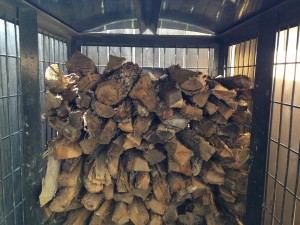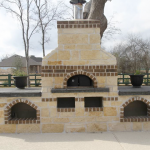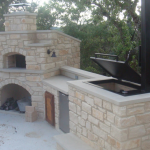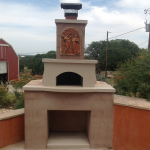Learn to Season Wood
If you own a wood-fired oven or are known for great outdoor cooking, likely you will receive offers for free wood. A storm knocks down a neighbor’s tree. A friend prunes his orchard. Someone clears land for construction. It’s great to find free wood. When you learn to season wood, the free supplies you come across will burn satisfactorily in your smoker, fireplace, oven and grill.
Some problems associated with outdoor cooking devices are caused by burning unsuitable wood, usually too wet. Wet wood creates dirtier smoke and less heat. That’s the main reason a wood-fired oven might not attain the high temperatures of which it is capable. When someone asks about getting a higher oven temperature or getting a fire lit, we ask about the wood they burn. Have they bought wood from a reputable source? Have they learned to season wood properly? Can they identify seasoned wood? (See our blog on the importance of seasoned wood.) Is this wood suitable to burn in an oven or smoker? Not if it’s diseased or a Christmas tree! Look for hardwoods like oak. Here in Texas other favorites are pecan, hickory and mesquite.
Identifying properly seasoned wood is a learning experience. Aaron Franklin, winner of the James Beard Best Chef: Southwest 2015 award and owner of Franklin Barbecue in Austin, says when he first started cooking he didn’t have as “good a sense for firewood as I do now.” He describes a freshly cut tree that was especially difficult for him. “I had trouble getting the fire to go…all day I ended up fiddling with it, trying to get the fire to work” (“Franklin Barbecue” pp.71-72).
Having learned to season wood, Aaron can describe his ideal piece of firewood: a piece of post oak, 16 to 18 inches in length, split to a diameter of 3-6 inches, and seasoned for about a year (p. 80).
To season wood, Aaron says first cut it into lengths suitable for your cooking device. Then split the lengths and stack them loosely enough for good airflow. Cover the stack with a tarp when it rains and wait….until it’s dried to about 20% moisture.
How long is that? A year? Three months? With a little experience, you will recognize seasoned wood by its appearance and feel. (see pictures on our blog). You will successfully manage any free wood that comes your way. You will make wise wood purchases. When you buy wood, find a reliable vendor!
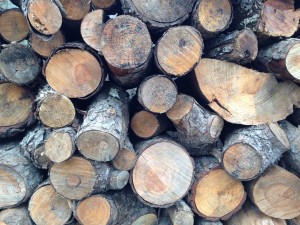
Even if you receive a load of unspilt logs, stacked loosely with good ventilation you can season wood for use in your wood-burning oven.



